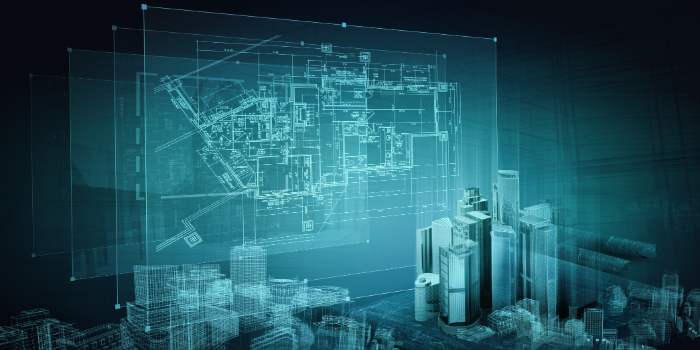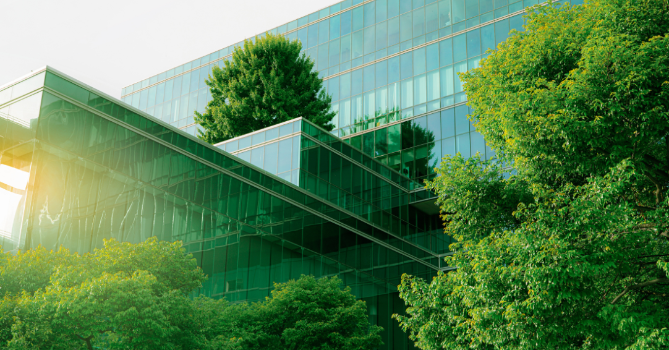
Future Trends in Sustainable Architecture Design
Sustainable architecture is more important than ever. Our world faces many environmental challenges, from climate change to resource depletion. Buildings play a big role in these issues, so architects are looking for ways to create eco-friendly designs.
Sustainable architecture focuses on reducing the negative impacts of buildings on the environment. This includes using renewable energy, reducing waste, and choosing green building materials. These efforts not only help the planet but also improve the quality of life for people who use these spaces.
As technology advances, new trends are emerging that make sustainable design even more effective and exciting. From smart buildings to innovative materials, the future of architecture is bright and green. This blog will explore these trends, showcasing how the industry is evolving to meet the needs of both people and the planet. Stay with us to learn about the future of sustainable architecture.
Sustainable architecture is evolving rapidly. New trends are making buildings greener and smarter. Here are three key trends shaping the future.
Green Building Materials Green building materials are becoming more popular. These materials are eco-friendly and sustainable. Examples include recycled steel, bamboo, and cross-laminated timber. These materials reduce waste and lower carbon footprints. They are also durable and energy-efficient. Projects like the Bullitt Center in Seattle use these materials to great effect. This trend is helping to create buildings that are not only green but also beautiful and functional.
Energy Efficiency and Renewable Energy Integration Energy efficiency is crucial in sustainable design. Architects are incorporating renewable energy sources like solar panels and wind turbines into their designs. Energy-efficient systems like LED lighting and smart thermostats are also being used. The Edge building in Amsterdam is a great example. It uses solar panels and energy-efficient systems to minimize energy use. By integrating these technologies, buildings can reduce their reliance on fossil fuels and lower their overall energy consumption.
Smart and Connected Buildings Smart buildings use technology to improve efficiency and comfort. They have systems that monitor and control energy use, lighting, and temperature. Sensors and automation make buildings more responsive to the needs of their occupants. The Crystal in London is a prime example. It uses smart technology to manage energy and water use efficiently. This trend is making buildings more sustainable and comfortable to live and work in. Smart buildings are the future, offering significant benefits in terms of energy savings and user experience.
These emerging trends are paving the way for a more sustainable and efficient future in architecture. They demonstrate how innovation can meet the challenges of today and tomorrow.

Advanced technologies are revolutionizing sustainable architecture. They make buildings more efficient, eco-friendly, and innovative. Here are three key technologies leading the way.
Building Information Modeling (BIM)
Building Information Modeling (BIM) is transforming the way buildings are designed and constructed. BIM is a digital tool that creates detailed 3D models of buildings. These models include information about materials, energy use, and construction processes. BIM helps architects and builders visualize and optimize every aspect of a building's design. It reduces waste, improves efficiency, and enhances collaboration among project teams. By using BIM, projects like the Sydney Opera House have achieved remarkable sustainability outcomes. BIM is a game-changer in making buildings greener and smarter.
3D Printing and Prefabrication
3D printing and prefabrication are cutting-edge methods in construction. 3D printing allows for the creation of complex building components with minimal waste. Materials like concrete and bioplastics can be printed layer by layer, creating strong and precise structures. Prefabrication involves assembling building parts off-site and then transporting them to the construction site. This method reduces construction time, waste, and costs. The Housing Project in Eindhoven, Netherlands, uses 3D printing to build sustainable homes quickly and efficiently. These technologies are making construction more sustainable and innovative.
Renewable Energy Systems
Renewable energy systems are essential for sustainable buildings. Solar panels, wind turbines, and geothermal systems are commonly used. These systems generate clean energy and reduce reliance on fossil fuels. Solar panels convert sunlight into electricity, while wind turbines harness wind power. Geothermal systems use the earth's heat for heating and cooling. The Bullitt Center in Seattle uses solar panels to produce more energy than it consumes. These renewable energy systems are vital for creating energy-efficient and eco-friendly buildings. They help reduce carbon footprints and promote sustainability.
Advanced technologies are driving the future of sustainable architecture. They offer innovative solutions to meet environmental challenges and improve building performance. These technologies are essential for creating a greener, smarter world.
Examining real-world projects helps us understand the impact of sustainable architecture. Here are three inspiring case studies.
Mountain and Cloud Cabins by Wiki World and Advanced Architecture Lab
The Mountain and Cloud Cabins in China are a stunning example of sustainable design. These cabins are built with eco-friendly materials like timber and are elevated to minimize their impact on the natural landscape. They use passive solar design principles, maximizing natural light and heat. The cabins blend seamlessly with their surroundings, providing a unique, nature-immersive experience. This project highlights how thoughtful design can create beautiful, sustainable living spaces that respect and preserve the environment.
Burger Center for Advanced Pediatric Care, USA
The Burger Center for Advanced Pediatric Care in Philadelphia is a leading example of sustainable healthcare architecture. The building uses green roofs, rain gardens, and energy-efficient systems to reduce its environmental impact. Large windows and open spaces ensure plenty of natural light, improving the well-being of patients and staff. The building's design reduces energy use by 20% compared to standard buildings. This center demonstrates how sustainability can be integrated into healthcare facilities to create healthier environments for everyone.
Revitalizing Vernacular Architecture
Revitalizing vernacular architecture involves adapting traditional building techniques to modern needs. This approach uses local materials and construction methods that are naturally sustainable. In India, architects are reviving the use of mud, bamboo, and thatch in new constructions. These materials are not only eco-friendly but also culturally significant. Projects like the Laurie Baker Centre for Habitat Studies showcase how traditional techniques can meet contemporary sustainability standards. This trend preserves cultural heritage while promoting sustainable building practices.
These case studies illustrate the diverse ways sustainable architecture is being implemented around the world. They show that with creativity and commitment, buildings can be both innovative and environmentally friendly. These examples set a precedent for future projects, proving that sustainable design is both feasible and beneficial.

The future of sustainable architecture looks promising and dynamic. With rapid advancements in technology and growing awareness of environmental issues, we can expect significant changes in how buildings are designed and constructed.
Increased Use of Renewable Energy: Buildings will increasingly rely on renewable energy sources like solar, wind, and geothermal. Integration of these systems will become standard, drastically reducing reliance on fossil fuels. Energy-neutral or even energy-positive buildings will become more common.
Smart Buildings: Smart technologies will play a major role in making buildings more efficient and user-friendly. Sensors and automation systems will optimize energy use, lighting, and climate control. These buildings will adapt to occupants' needs in real-time, enhancing comfort and reducing waste.
Innovative Materials: The development of new, sustainable materials will continue to advance. Biodegradable and recycled materials will become mainstream. Innovations like self-healing concrete and transparent solar panels will revolutionize building design and functionality.
Urban Greening: Green roofs, vertical gardens, and urban forests will become integral parts of cityscapes. These elements not only improve air quality and reduce heat islands but also enhance urban biodiversity and residents' well-being.
Circular Economy in Construction: The construction industry will adopt circular economy principles, focusing on reuse, recycling, and reducing waste. Buildings will be designed with their entire lifecycle in mind, promoting sustainability from construction to demolition.
Overall, the future of sustainable architecture is geared towards creating smarter, greener, and more resilient buildings. These trends will help mitigate environmental impacts and create healthier, more sustainable living environments for future generations.
Sustainable architecture is the key to a greener future. As we face environmental challenges, innovative design and technology offer solutions. From using green materials and renewable energy to creating smart buildings, the field is evolving rapidly. Real-world examples show that sustainable design is both achievable and beneficial. Looking ahead, the integration of advanced technologies and eco-friendly practices will continue to shape the industry. By embracing these trends, we can build a future that respects our planet and enhances our quality of life. Stay informed and inspired to support sustainable architecture in your community.